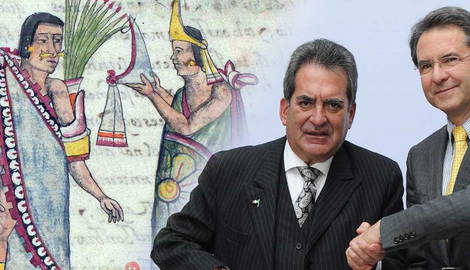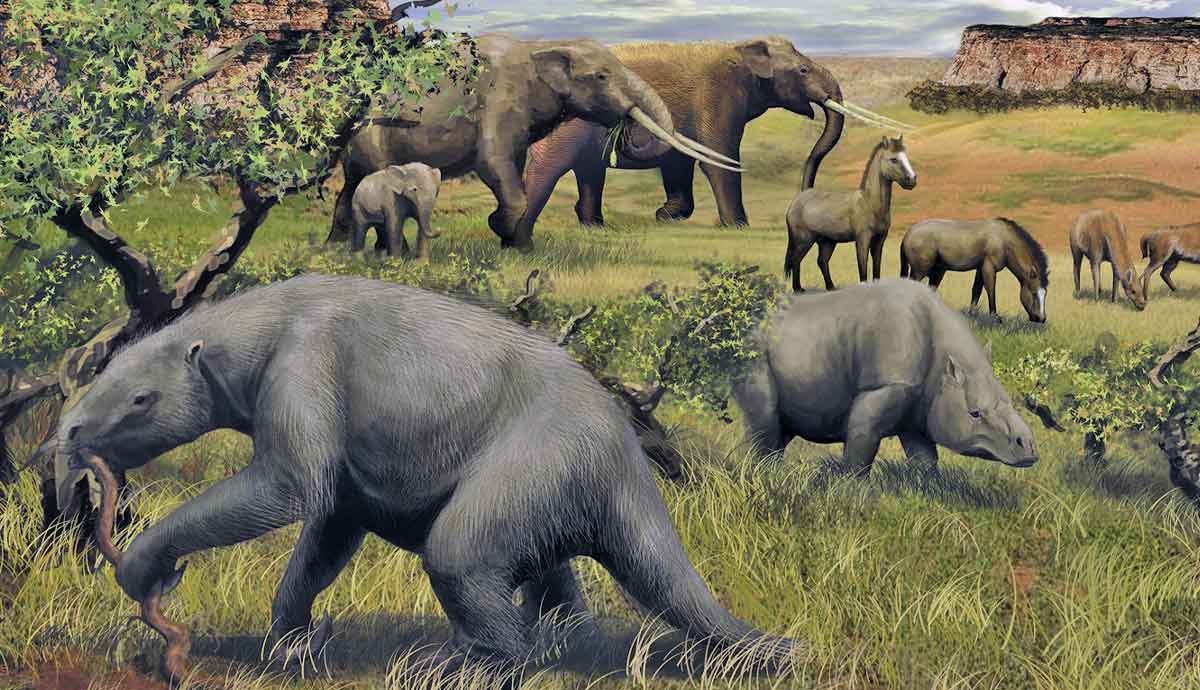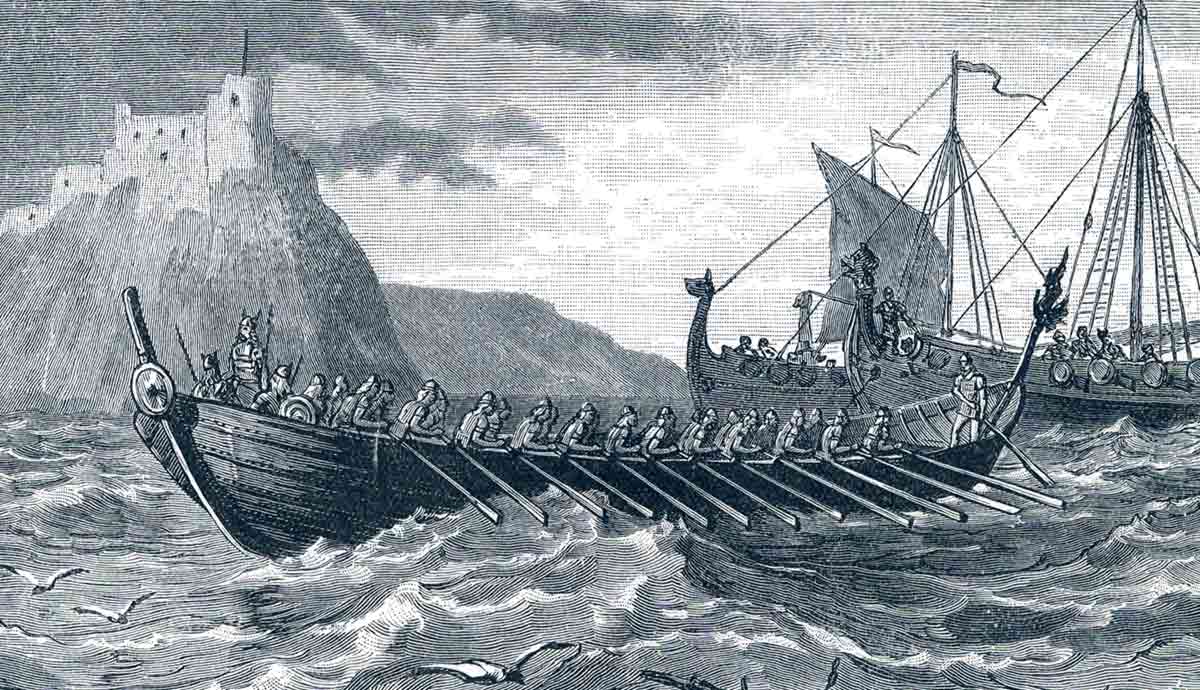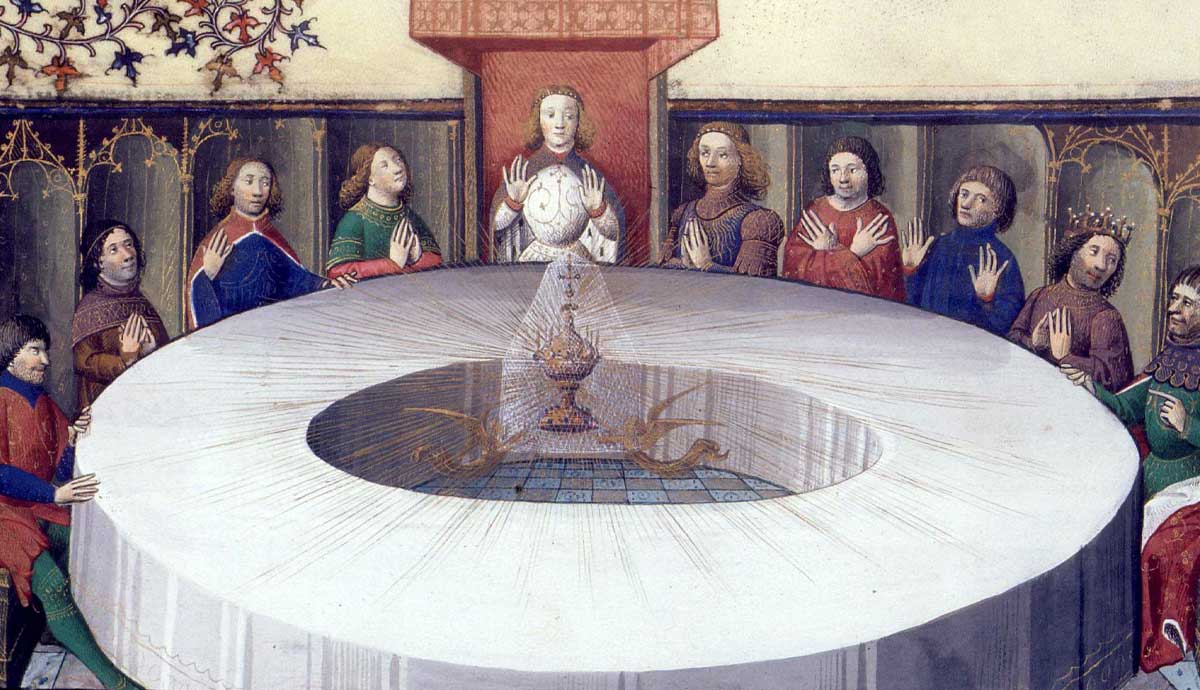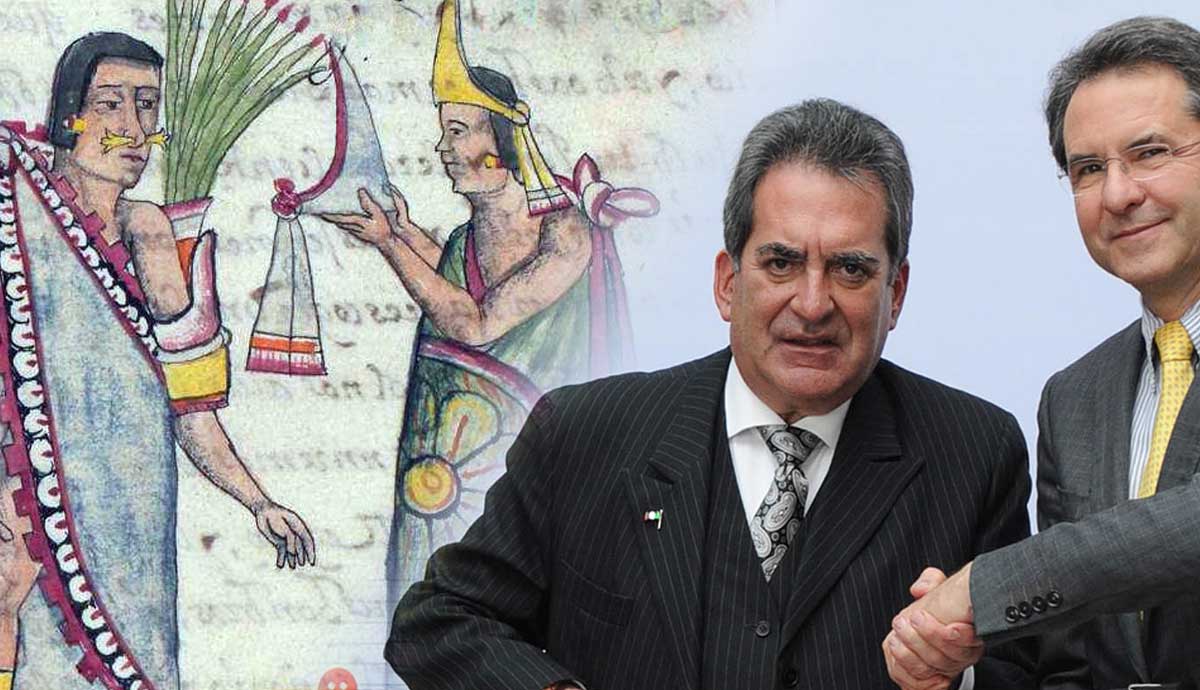
Montezuma II, also known as Moctezuma Xocoyotzin, ruled the Aztec Empire when the Spanish conquistadors arrived. It was not only his power that intrigued the conquistadors, but also the fact that, according to some chroniclers, he had produced over 100 children. These children carried on the Montezuma name through the centuries, with some lines surviving even to this day. Though Montezuma and his empire are gone, his descendants have influenced Mexican politics since the conquest.
Isabel Montezuma, The First Heir

The first of Montezuma’s legitimate children was a daughter named Tecuichpoch, born sometime between 1509 and 1510 to his wife, Princess Teotlalco. By the time she reached seventeen years old, she was four times a widow and had been baptized into the Catholic faith under the name Isabel Montezuma. Isabel was taken into the hands of famed conquistador Hernán Cortés when her fourth husband, Alonso de Grado, died. Under the care of Cortés, she soon fell pregnant with her first child. The child produced by this union was a girl, named Leonor Cortés Montezuma. However, due to Isabel’s refusal to accept her daughter, the girl was sent to live with a fellow conquistador named Juan Gutiérrez de Altamirano.
Cortés then arranged Isabel’s fifth marriage to conquistador Pedro Gallego de Andrade, with whom she had a son—Juan de Andrade Gallego Montezuma. In another case of bad luck for Isabel, her fifth husband passed away soon after, which led to her final marriage with Juan Cano de Saavedra. With Juan Cano, she had sons Pedro, Gonzalo, and Juan, as well as daughters Isabel and Catalina. These last two of her six marriages would create Montezuma’s most well-known familial lines—the Andrade-Montezuma and Cano-Montezuma families.
Isabel’s estranged daughter, Leonor, would marry a man named Juan de Tolosa, who had discovered vast deposits of silver in present-day Zacatecas. Her eldest son, Juan de Andrade Montezuma, would flee to Seville following several disputes with his half-siblings over inheritance. There, he left behind heirs who would come to be known as the Counts of Miravalle. Her sons Gonzalo and Pedro would remain in Mexico, intermarrying with other members of the nobility, while the younger Juan left for Spain, where he built Montezuma Palace. Her daughters, Isabel and Catalina, were sent to a convent where they lived for the rest of their days.
Pedro Montezuma and Other First Generation Heirs

While Isabel contributed heavily to the ancestry of many modern-day Montezumas, other familial lines of descent should not be overlooked. Though Isabel was one of Montezuma’s only legitimate children, he also had many children considered illegitimate under Aztec law who nonetheless are of great note in history. One of these children was Pedro de Montezuma, born to María Miyahuaxochtzin. His son, Diego Luis de Montezuma, following the same trend as his cousins, traveled to Spain where he married Francisca de la Cueva de Valenzuela. Together, they had a son named Pedro Tesifón de Montezuma. This son would then go before King Phillip IV of Spain to be given the title of the Count of Montezuma. His descendants still hold the title, the most recent being Juan José Marcilla de Teruel-Montezuma y Valcárcel.
With his concubine, Princess Acatlan, Montezuma had daughters Maria and Leonor Mariana. These daughters are believed to be the ancestors of the Sotelo-Montezuma line of the family, though little information about their lives remains. In recent years, it has been proposed that Doña Petronila de Montezuma was related to the Sotelo-Montezuma line through Leonor Mariana, and as a result of this, so are several prominent Mexican politicians.
The Forgotten Heir

Despite scant evidence from her post-conquest existence, Montezuma had a daughter with his other legitimate wife, Tlapalizquixochtzin, Queen of Ecatepec. This daughter was known as Doña Francisca de Montezuma and was raised with her sister Isabel after her parents perished. She was later relocated to her mother’s homeland, Ecatepec, and raised in the household of her aunt and uncle. This is where she would meet her cousin, and later husband, Diego de Alvarado Huanitzin. Because Doña Francisca and her husband, who later became governor of Tenochtitlan, avoided much interaction with the Spanish, much of her life wasn’t recorded. What is known is that together they had a few children, one of them being the famous chronicler Don Hernando de Alvarado Tezozómoc who wrote the Crónica Mexicayotl. Another of her sons. Cristóbal de Guzman Cecetzin would take over as governor for his father, hoping to continue the Nahua rule of Tenochtitlan while under the control of the Spanish Viceroy.
The Fight for Recognition

Though it is now generally accepted that Isabel Montezuma was a legitimate child and heir of Montezuma II, this wasn’t always the case. After conquering the city of Tenochtitlan, Hernan Cortés awarded Isabel with an encomienda that included the city of Tacuba, previously known as Tlacopan, as well as the labor of the Indigenous people who lived there. This encomienda would continue to belong to her throughout her life, no matter who she had married, and would provide her and her descendants with countless riches.
However, this encomienda, and others like it, was used by Cortés and the Spaniards in an attempt to prevent Montezuma’s heirs from taking back the land that was rightfully theirs. When Isabel and other descendants of Montezuma accepted these encomiendas, they had essentially forfeited their birthrights and ensured that Spanish law took precedence over Indigenous law. Isabel’s sixth husband, Juan Cano, traveled to Spain to attempt to regain his wife’s rights to her father’s kingdom.
In the years following her passing, Isabel’s children fought amongst themselves for the rights to the encomienda of Tacuba, even though she had described her wishes for its distribution in her will. She expressed hope in her will that after death, her status as the daughter of Montezuma would be recognized and that her rightful lands would be distributed to her descendants. In a bitter twist, 40 years after her death the Spanish courts proposed that if the descendants of Isabel renounced their natural rights to Montezuma’s empire, they would receive unoccupied encomiendas and the money that came with them. Despite her fight for recognition, Isabel’s right to the empire was never secured.
Montezuma’s Descendants Today

Some historians estimate that Montezuma left behind somewhere between 500 and 2,000 descendants. The majority of these descendants still reside in Mexico, but there are many that have been integrated into the Spanish nobility as a result of the movement of the children of Isabel and Pedro de Montezuma. As mentioned above, the title of the Duke of Montezuma is still bestowed upon the descendants of Pedro Tesifón de Montezumal. Princess Rosario, the former wife of the prince of Bulgaria, and of noble Spanish parentage, is also a descendant of Montezuma through the sons of Isabel. Among Montezuma’s well-known Mexican descendants are a host of politicians, historians, and academics. This includes the current Mexican ambassador to the United States, Esteban Montezuma, historian Blanca Barragan Montezuma, and archaeologist Eduardo Matos Montezuma.
Though she is not mentioned as frequently as Isabel, the descendants of Leonor Mariana de Montezuma have been well documented by researcher Margo Tamez. From her granddaughter, Petronilla de Montezuma, came Ana Francisca Montezuma de Gabay. After marrying Lope Ruiz de Esparza, the couple settled down in Aguascalientes and had a multitude of children. Many of these children remained in Aguascalientes, building the Esparza-Montezuma line that exists to this day. One likely member of this line was Gerardo Ruiz de Esparza, the former Secretary of Communications and Transportation of Mexico. Nonetheless, Petronilla de Montezuma’s relationship to the Aztec emperor has been disputed over the years.
The Montezuma Legacy

Due to the sheer number of Montezuma’s concubines and wives, plus the alleged number of children he had, it would be impossible to determine the true number of his descendants that exist today. Those who carry the Montezuma name today come from the most well-documented of Montezuma’s children. Still, there were many children, almost a hundred (if Spanish sources are to be believed), that existed at the time of the conquistadors’ arrival. These children, most likely considered illegitimate by the incoming Spanish, would go on to create families of their own without the recognition of their royal heritage. With this knowledge, it can be assumed that there are many more descendants of Montezuma in Mexico than previously thought, but without the proper documentation, there is no feasible way to generate an accurate number.
Despite the generations that separate Montezuma’s descendants from his empire, they still acknowledge their ancestry and the effects that conquerors like Cortés had on their people. In 2019, one descendant of Montezuma, Federico Acosta, met with a descendant of Cortés, Ascanio Pignatelli, to receive a personal apology. At this meeting, Acosta revealed that his family had received a government pension for being descendants of Montezuma until the 1930’s. This pension seems to be comparable to the settlement that was reached that allowed the descendants of Isabel Montezuma to collect money from encomiendas as long as they renounced their rights to the land. Scholars like Blanca Barragan Montezuma and Eduardo Matos Montezuma have worked to reckon with the complex and intertwined history of the Aztec Empire and Spanish colonialism in the creation of modern Mexico.

Though Montezuma’s life ended long ago, there is no question that his descendants have made their mark on the world. Through his children, Montezuma has left an admirable legacy that continues to this day in both Spain and Mexico. Perhaps, through the work of scholars descended from Montezuma himself, new information about this powerful emperor will be discovered.
